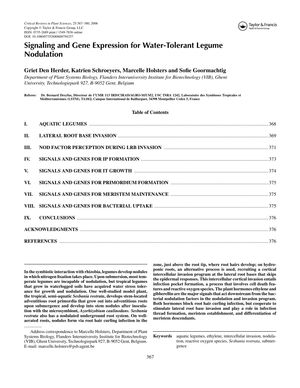Signaling and Gene Expression for Water-Tolerant Legume Nodulation
August 2006
in “
Critical Reviews in Plant Sciences
”

TLDR The tropical legume Sesbania rostrata can form nodules in waterlogged conditions using a different method that involves plant hormones and specific genes.
The document from 2006 reviews the nodulation process in the tropical legume Sesbania rostrata, which can nodulate under waterlogged conditions unlike most temperate legumes. It explains that S. rostrata uses an alternative nodulation pathway involving lateral root base (LRB) invasion, which bypasses the typical epidermal responses seen in aerated soils. The study highlights the role of plant hormones ethylene and gibberellin in regulating this nodulation process, where they inhibit root hair curling infection but promote LRB invasion and infection thread formation. Additionally, the document discusses the importance of Nod factors (NFs) in nodulation, the perception of NFs by receptor-like kinases (RLKs), and the involvement of glycoproteins, the SrEnod2 gene, and chitinase-like enzymes in nodule formation. The study also notes the role of the gene SrSymRK in the structure of infection threads and bacterial uptake, although it is not essential for the NF signaling complex. The document concludes that the nodulation strategy of S. rostrata offers valuable insights into the study of nodulation, including hormone involvement and gene expression patterns.
